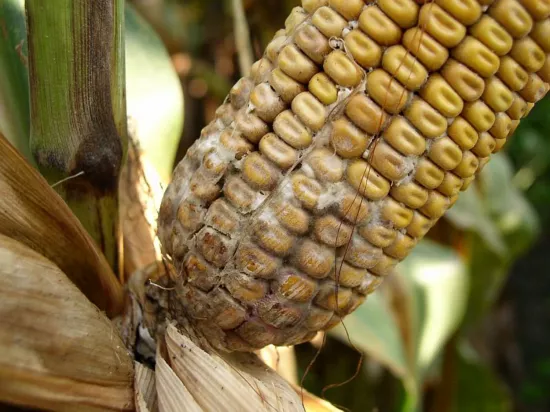Diplodia ear rot is a fungal disease that affects corn (maize) crops. It is caused by the fungus Diplodia maydis. The disease can lead to significant yield losses and reduced grain quality. Here are some symptoms of Diplodia ear rot that you should know about:
- Rotted or discolored kernels: Diplodia ear rot typically causes a browning or grayish discoloration of the kernels. The infected kernels may appear shrunken, shriveled, or chalky in appearance.
- White fungal growth: A white, cottony fungal growth may develop on the surface of infected kernels. This growth is often accompanied by a black or dark brown fungal spore mass.
- Moldy or musty smell: Diplodia ear rot-infected ears often have a moldy or musty smell, which can be detected upon close inspection.
- Soft, spongy texture: The infected kernels may become soft and spongy due to the decay caused by the fungal infection.
- Husk degradation: Diplodia ear rot can cause the husks surrounding the infected ears to degrade and become discolored. The husks may turn brown, black, or gray.
- Ear drooping or premature senescence: Infected ears may exhibit drooping or premature senescence (aging) before reaching maturity.
It’s important to note that the severity of Diplodia ear rot symptoms can vary depending on environmental conditions, fungal strain, and corn hybrid susceptibility. If you suspect Diplodia ear rot in your corn crop, it is recommended to consult with a local agricultural extension service or plant pathologist for accurate diagnosis and appropriate management strategies.
Join 'Farmers Mag' WhatsApp Channel
Get the latest Farming news and tips delivered straight to your WhatsApp
CLICK HERE TO JOIN






